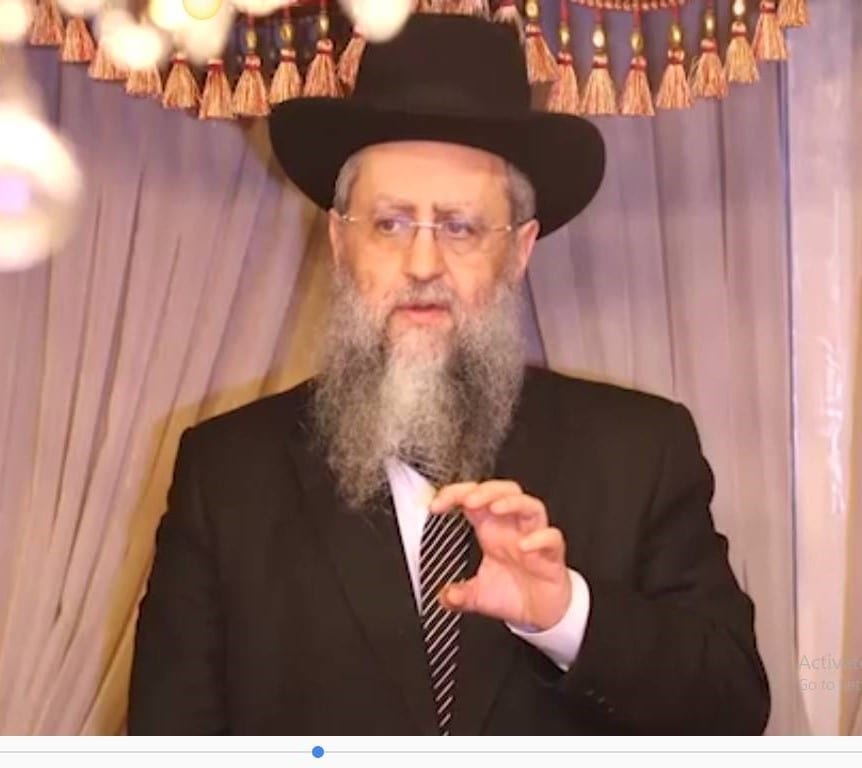These past 8 years many American students studying in Israel who looked for a warm caring home to spend Shabbat by know they will find it by the Jacobovitz family in Ramat Bet Shemesh.
Rabbi Abraham Jacobovitz and his wife turned the house into a public home where students can sleep and eat and warm up their souls with the encouragement showered on them. “From the outset when we bought the house we planned it wouldn’t be our private house,” Rabbi Jacobovitz explains, “the first floor is totally devoted to the students and it includes a library, kitchen and 15 beds. During the week the floor is used at night to give a seminar to girls. We have lectures and classes and we have an extensive English library with over 3,000 books.”

Rabbi Jacobovitz also lectures at the IDF to strengthen the soldier’s outlook and Judaism. “The soldiers really need it” says Rabbi Jacobovitz.
But Rabbi Jacobovitz doesn’t stop there. Every few weeks he flies to the states to speak in some university, whether to lecture or teach Torah or to try the stop the plague of intermarriage.
Rabbi Jacobovitz explains: “I lived in the states for 40 years. Though I was born in Israel I moved to the states with my parents at age 16 and I learned in the Mir yeshiva in Brooklyn for 7 years. After getting married I moved to Detroit and learned in a Kollel there for a few years”.
Rabbi Jacobovitz was always drawn to Jewish outreach and this was his impetus to establish a learning center for people who wanted to come closer to Judaism. “I rented a building and established the learning center. I also made a synagogue and a library.”
In a very short time his project was taking off and when Rabbi Jacobovitz saw the great need he started another project at the University of Michigan where he would offer students to learn about Judaism. “I would come to the university often together with a group of young Kollel students and we’d learn with non-religious students. We called ourselves “Machon LaTorah”.

How do you explain that students far away from religion are interested in Judaism?
“You need to understand that the numbers are really large when you deal universities. Let’s say there 35,000 students in the university from those there are about 6,000 Jews. Out of that number it’s not a wonder that some would be interested.”
Rabbi Jacobovitz’s project soon expanded way beyond the confines of the university to many other places. “I found myself driving around the states and organizing learning with students, delivering lectures and organizing “Shabbatone” weekend seminars,” Rabbi Jacobovitz recalls.
Where did you get your budget from?
“Our budget came mainly from the local community. We’d sometimes make a dinner and people gave generously. The project had a half million dollar annual budget and Thank G-d we managed to maintain the project.”
17 years ago Rabbi Jacobovitz and his colleagues discovered that students were really interested in the learning project but it was hard for them to stick to it steadily. “We decided that we needed an incentive to get students to come to us on a continuous basis. We decided that we would give a $500 stipend to anyone who would come for 10 weeks straight and fulfilled a commitment to learn 3 hours a week and participate
in Shabbatone weekends in Detroit and Chicago. Our first group was 17 students which really took to the idea. Until now I still have strong ties with them and of the 17, 13 became religious, it’s simply touching.”
For the next semester more students signed up. “This time it was also very successful and we realized there was no reason we should succeed in other places. So we branched out to other universities around the states and today we have more than 50 branches. The Wolfson family graciously took us under their wing and sponsors a great percentage of the project.”
What happens when the students come to meet?
“Our program is designed the same for every location. First there’s a lecture on Torah outlook then a discussion and after that a guest speaker
comes. He won’t necessarily be a rabbi but someone who can describe from his perspective what it means to a Jew. We once asked someone to speak and he demurred saying he’s not a rabbi. But I told him he should describe life as a religious businessman and activist. His lecture was riveting. He told the students how he gets up at 5:30 every morning to learn the ‘Daf Yomi’ page of Talmud a day before praying and going to his office. When students asked him where his children learn he told them he took one of his sons in his private jet to Israel for an acceptance test to a yeshiva there. The students were deeply impressed and without a doubt there’s nothing like a living example to bring hearts together and closer to Torah.”
Intermarriage- the ongoing Jewish tragedy
Rabbi Jacobovitz bumps into this painful and all too prevalent phenomenon all the time; the tragedy of intermarriage. “Unfortunately I know about this from close up. I remember predictions 40 years ago that there would be 100 percent intermarriage but someone who actually intermarried was embarrassed or at least his parents were. Some would even deny it because it was shameful. What happened was that intermarriage became more and more acceptable over the years. Many students come to us wanting to join our program and they tell us their father is non-Jewish and their mother is Jewish. Usually out of 10 students who join our program 4 will have non-Jewish fathers and Jewish mothers. There will occasionally be someone with a Jewish father and non-Jewish mother which is really tragic.
What is the percentage of intermarriage today?
“There are no official statistics for intermarriage but my estimate is that in the US it’s about 50%.” Rabbi Jacobovitz’s dealing with intermarriage prompted him to write a book on the topic. The book is called “Perfect Strangers – redefining intermarriage” and it reached thousands of college students and young professionals. A third edition was already printed to meet the demand. A Hebrew version for secular Israelis is hot off the press.

What news do you introduce in your book?
“The most basic thing I explain is that there’s a mindset that we’re against intermarriage because we’re racist, have a dislike for non-Jews and don’t want them; but this is simply not true. Throughout the whole book I explain that this has nothing to do with racism but you must understand what Judaism is, what man’s purpose in the world is and what love and marriage are. At the end of the book, only after understanding the deep essence of marriage and the deep things hidden there, then you can start to understand we’re talking about something spiritual. The intimate relationship of humans isn’t merely biological like by animals. A horse and a mare don’t have a wedding because a wedding is spiritual in its essence. Therefore when a man and woman from totally different spiritual backgrounds attempt to unite there can’t be a spiritual connection between them. It’s not possible.”
“I’ve given lectures about this to intermarried couples and they say that they actually understand what I’m trying to say. They knew we have nothing against non-Jews but that there’s a deep spiritual fundamental difference which doesn’t allow for intermarriage.
Are you successful?
Success needs to be divided into 2 categories. When a mixed couple was going out before any marital commitment or engagement, many times I was successful in breaking it up. But after a wedding or even an engagement, the successes are zero. The couple is faced with 2 choices that they will not accept. One choice is a halachic conversion and the other choice is to divorce. The conversion choice is usually rejected by the Jewish partner because it will require him/her to accept mitzvoth too. Divorce is a painful option because you’re dealing with emotional ties and love that developed between them. In this case all I do is pray for a miracle.”




